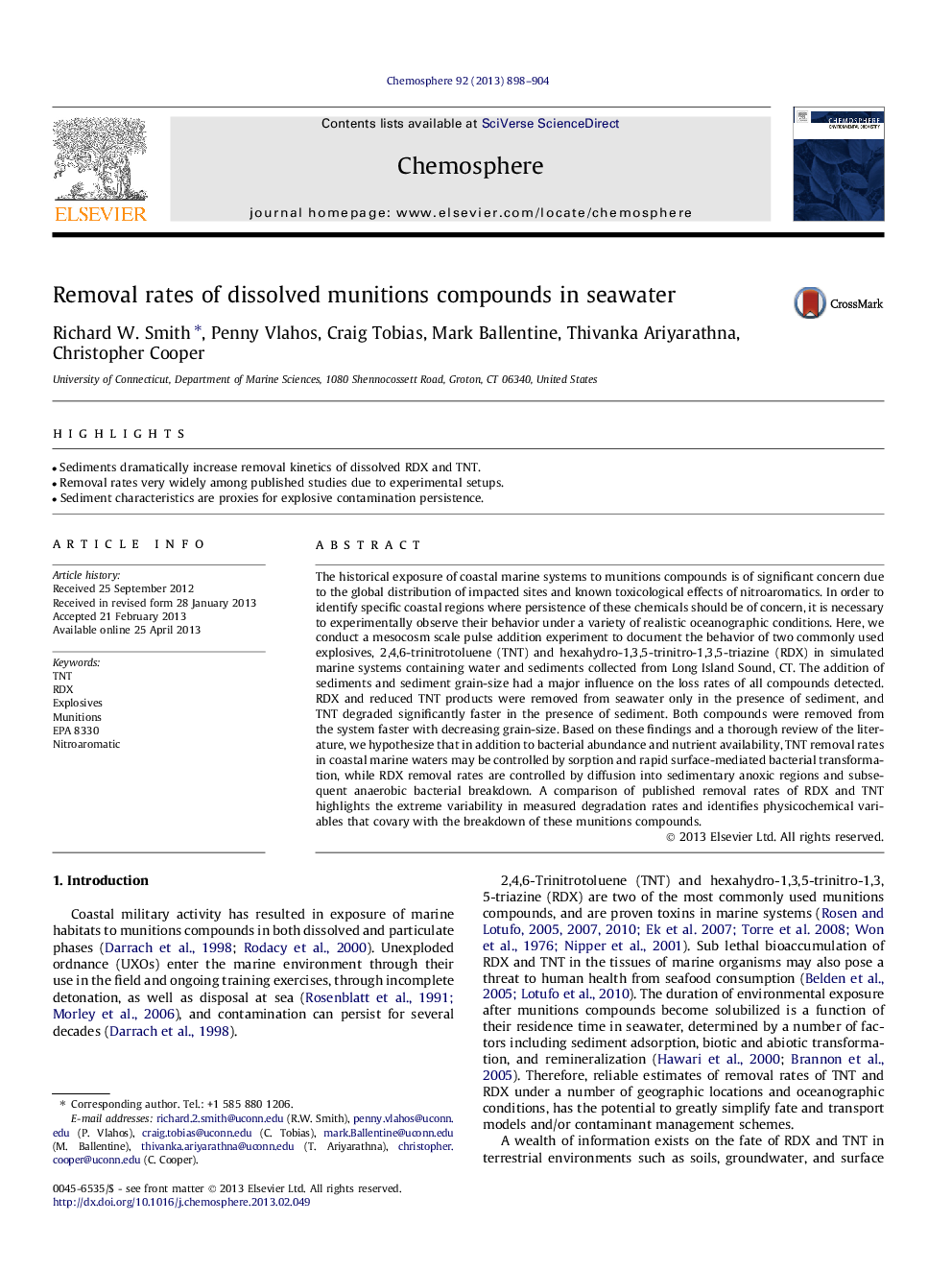| Article ID | Journal | Published Year | Pages | File Type |
|---|---|---|---|---|
| 6309994 | Chemosphere | 2013 | 7 Pages |
Abstract
The historical exposure of coastal marine systems to munitions compounds is of significant concern due to the global distribution of impacted sites and known toxicological effects of nitroaromatics. In order to identify specific coastal regions where persistence of these chemicals should be of concern, it is necessary to experimentally observe their behavior under a variety of realistic oceanographic conditions. Here, we conduct a mesocosm scale pulse addition experiment to document the behavior of two commonly used explosives, 2,4,6-trinitrotoluene (TNT) and hexahydro-1,3,5-trinitro-1,3,5-triazine (RDX) in simulated marine systems containing water and sediments collected from Long Island Sound, CT. The addition of sediments and sediment grain-size had a major influence on the loss rates of all compounds detected. RDX and reduced TNT products were removed from seawater only in the presence of sediment, and TNT degraded significantly faster in the presence of sediment. Both compounds were removed from the system faster with decreasing grain-size. Based on these findings and a thorough review of the literature, we hypothesize that in addition to bacterial abundance and nutrient availability, TNT removal rates in coastal marine waters may be controlled by sorption and rapid surface-mediated bacterial transformation, while RDX removal rates are controlled by diffusion into sedimentary anoxic regions and subsequent anaerobic bacterial breakdown. A comparison of published removal rates of RDX and TNT highlights the extreme variability in measured degradation rates and identifies physicochemical variables that covary with the breakdown of these munitions compounds.
Related Topics
Life Sciences
Environmental Science
Environmental Chemistry
Authors
Richard W. Smith, Penny Vlahos, Craig Tobias, Mark Ballentine, Thivanka Ariyarathna, Christopher Cooper,
